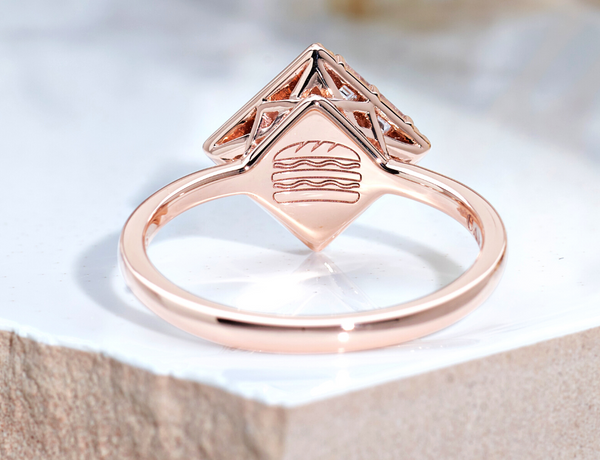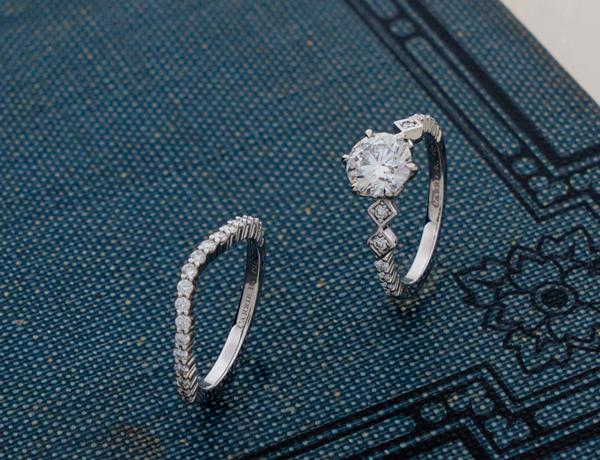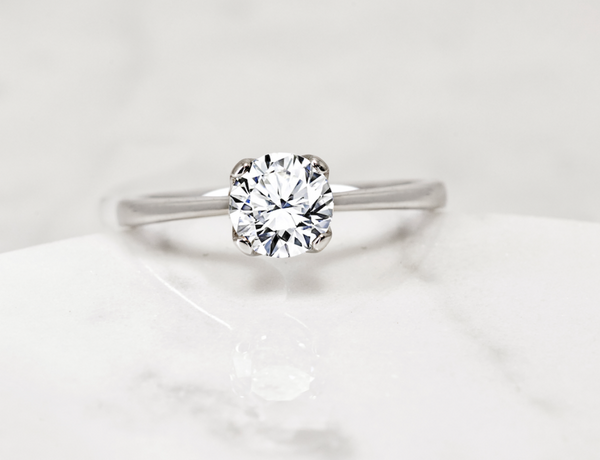1. Find out what gemstone you want
There are many gemstones you can choose for your ring. While this means that there’s definitely something for everyone, the downside is that you can end up overwhelmed by the options!
Find out from your partner if they have a preference, to start with. But if you wish to keep it a surprise, you should consider their lifestyle, taste and preference.
Lifestyle is particularly important, even if a lot of people forget it. You see, different types of gemstones have different levels of hardiness.
For instance, if your partner leads an active lifestyle, it would be more practical to get them a harder gemstone (like diamonds and sapphires). These are durable enough to withstand a little rough treatment.
By the way, this wouldn’t be much of an engagement ring buying guide if we didn’t tell you to set a budget beforehand! Sharing that and the other info with your jeweller can help them give you a recommendation.

2. Decide on shape of the gemstone
Gemstone shape is a personal preference—any ring buying guide that says otherwise is mistaken. Never mind the trends, as every shape is beautiful when in the eye of the right beholder.
So, it would be good to get hints from your partner if they have any preferred shapes. Try asking their close friends as they might be able to give you helpful tips!

3. Choose a ring setting
A ring setting is essentially the ring design and is best decided after you have selected the shape of your gemstone. Here’s how you can understand the different settings.
Essentially, there are 2 parts to a ring setting - the center stone setting and the ring shank (band) setting.
As the name suggests, the center stone setting is how you want the center stone to sit on the ring.
Classic center settings are Prong and Halo, while Three-Stone and Bezel are increasing in popularity too. Each setting comes with its pros and cons, which you can read about here.

Next, the ring shank setting. Decide if you want to keep it plain or add gemstones (such as diamonds) on it.
You can have gemstones all around the ring shank (full eternity) or halfway around (half eternity). Then you can choose how you want the gemstones to be set on the ring shank: prong, bezel, pave etc. See the different types of ring shank settings here.

Again, the ring setting should be based on your partner’s taste and lifestyle.
For example, a Solitaire setting is suitable for those who like a classic and simple ring. Meanwhile, a Bezel setting is good for those who are active and a Pavé setting is for those who like as much bling as possible.
4. Know your 4Cs
The 4Cs are Carat, Cut, Colour and Clarity. Understanding the 4Cs will allow you to select the best-value gemstone without paying for the 'industry premiums’.
For instance, did you know cut is the most important of the 4Cs? It can allow a half-carat diamond to look like a 1 carat diamond!
That’s why we always strongly discourage our customers from picking their gemstones without understanding the 4Cs beforehand. You may like to read about the 5 Myths of Diamond Rings and learn about the 4Cs of a diamond, as such.

5. Metals for your ring
As a last step, you should consider the colour and material for the metal part of the ring (also known as the ring shank or band).
Gold is the most common material for engagement rings. Traditionally, people tend to choose higher-value gold such as 18K and 14K.
However, for those who value practicality over tradition, they may opt for lower-value gold, which is also tougher than its higher-value counterparts.




